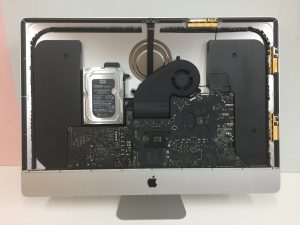

- #Mac desktop screen repair cost how to#
- #Mac desktop screen repair cost drivers#
- #Mac desktop screen repair cost series#
#Mac desktop screen repair cost how to#
How to Fix White Screen of Death on Your Mac All told, the white screen of death means your Mac can’t figure out what to do next because a process is still working, and your computer wants it to finish.
#Mac desktop screen repair cost drivers#
The MacBook Pro white screen can also pop up when there are incompatible drivers on your Mac, or if an application has issues while upgrading. Often, this occurs after an operating system update, which you may not have even been aware occurred if you have automatic updates on. Your Mac is totally unusable, and you're left waiting looking at a Mac or MacBook Pro white screen with no logo or anything telling you it's working properly. When you see the Mac or MacBook Pro white screen of death, it's indicative something is really wrong. The Power Mac line has since been discontinued to make room for the Mac Pro, Apple’s latest “tower-ish” desktop models, while the Mini continues to be produced.Try free What is the White Screen of Death
#Mac desktop screen repair cost series#
iMacs of today look similar to monitors, with the computer built into the curved space behind the display.Īlso released around the 2000s were a series of tower desktop Macs in the Power Mac series, and a line of compact desktops with the Mac Mini. This design would grow to become smaller and thinner throughout the years, with a transition to aluminum back cases and intel processors around 2005. In 1998, Apple released the first iMac, the G3, which was an all-in-one computer with a translucent plastic case that allowed the user to see an obstructed view of the components inside.

Further iterations of the Macintosh would include color screens, compact designs, and a battery powered model, the Macintosh Portable. However, it succeeded where the Lisa failed by offering this functionality at a lower cost, while also increasing the speed. It was originally designed to implement a text-based interface capable of running multiple programs simultaneously, but during development was altered to include the microprocessor from the Lisa computer, and to run the same graphical-based programs that characterized the Lisa. Conceived by Jef Raskin as a cheaper and more accessible alternative to the Apple II and Lisa computers. The Macintosh was Apple’s more profitable and prolific offering, with the first Macintosh coming out in 1984. Although the device sold only 10,000 units over the two years it was available, it was influential in its inclusion of the GUI, which may have swayed the direction of personal computing away from the text based computers seen throughout the 70’s and early 80’s. It was one of the first computers with a Graphical User Interface (GUI) that was available to consumers, although it came at a high price. The next major product released by Apple was the Lisa. The Apple II had several iterations, with the last, the Apple IIe, being produced until 1993. The Apple II improved upon the design of the Apple I, with the circuit board being moved into a plastic case with an integrated keyboard. The computer was sold for $666.66 and produced for a year before being discontinued for the production of the Apple II. However, the device had no case, and was sold as an exposed circuit board. The device was designed to allow the user to connect a keyboard and to display the interface on a television set. The device was designed and hand-built by Steve Wozniak out of a Palo Alto garage and sold at the suggestion of Steve Jobs. Apple released its first desktop computer with the Apple I in 1976.


 0 kommentar(er)
0 kommentar(er)
